The New Relic agent reads its configuration from the newrelic.yml or newrelic.config. New Relic APM agent configuration options allow you to control some aspects of how the agent behaves. Some of these config options are part of the basic install process.
| Go agent | newrelic.Config |
| Java agent | newrelic.Config |
| DOT NET agent | newrelic.config |
| Node.js agent | newrelic.js |
| Node.js agent | newrelic.js |
| Python agent | newrelic.ini |
| Ruby agent | newrelic.yml |
Newrelic Java Agent
The Java agent requires the license_key and app_name settings at startup. All the other settings are optional. The New Relic Java agent reads its configuration from the newrelic.yml file. By default the agent looks for this file in the directory that contains newrelic.jar.
You can override the config file’s location by setting the newrelic.config.file system property to a fully qualified file name.
System property
system property means, these property you can set in app runtime environment such jvm or dotnet.
Such as in tomcat catlina.bat
export JAVA_OPTS=”$JAVA_OPTS -javaagent:/var/lib/tomcat8/webapps/newrelic/newrelic.jar”
or catlina.sh
SET JAVA_OPTS=%JAVA_OPTS% -javaagent:/full/path/to/newrelic.jar
Where as -javaagent is system property. You can override the config file’s location by setting the newrelic.config.file system property to a fully qualified file name.
i.e java -Dnewrelic.config.file=/opt/tomcat/newrelic/newrelic.yml
The Newrelic configuration file such newrelic.yml file is split into stanzas corresponding to different environments:
- Test
- Development
- Staging
- Production (default)
New Relic applies settings in the common stanza to each of these environments. You can select other environments as the default by setting the newrelic.environment system property to the environment name.
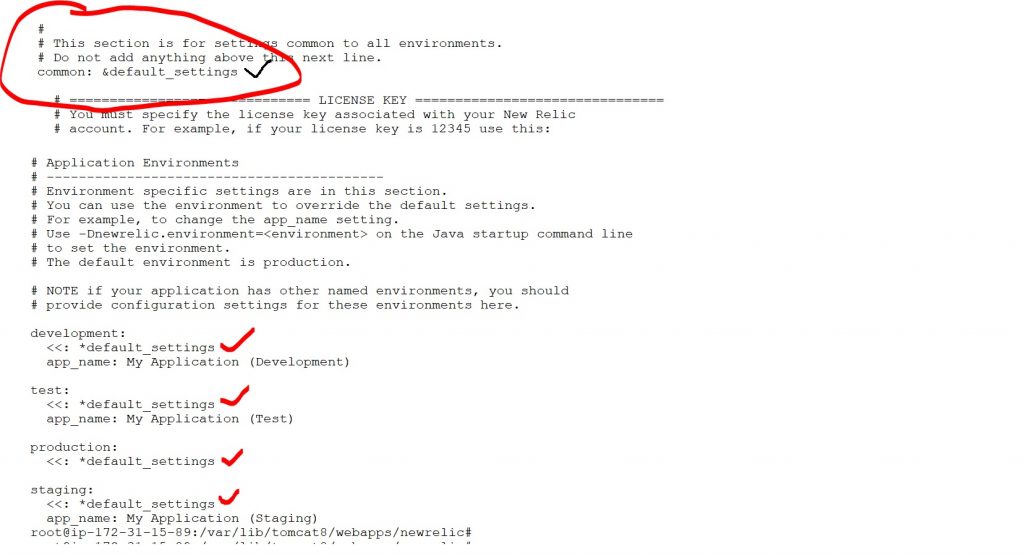
General configuration settings in Java agent newrelic.yml Specification
license_key (REQUIRED) app_name (REQUIRED) agent_enabled apdex_t (DEPRECATED) appserver_port audit_mode ca_bundle_path enable_auto_app_naming enable_auto_transaction_naming enable_custom_tracing extensions.dir high_security insert_api_key labels max_stack_trace_lines proxy_host proxy_password proxy_port proxy_user proxy_scheme send_data_on_exit send_data_on_exit_threshold send_environment_info send_jvm_props ssl (DEPRECATED) sync_startup scala_futures_as_segments
Configuration settings precedence
Configuration settings precedence
To override any setting in the config file, use a system property override. In certain environments, environment variables can also be used to override both the config file and the system properties. The environment variables primarily exist to support Heroku.
With the Java agent,
- server-side configuration overrides all other settings.
- Environment variables override Java system properties.
- Java properties override user configuration settings in your newrelic.yml file.
- User settings in App custome override the newrelic.yml default settings.
Newrelic Configuration settings precedence Java Agent
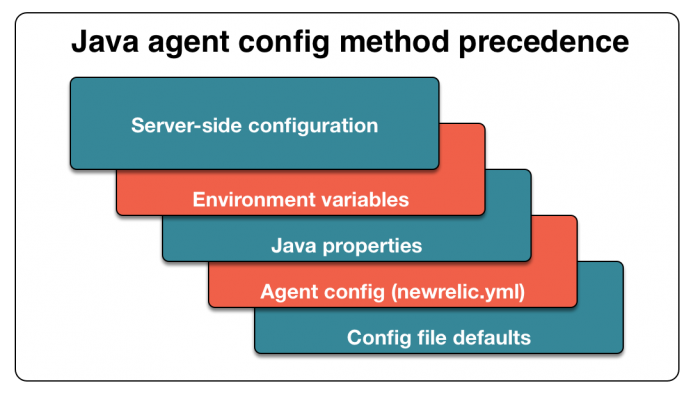
Newrelic Configuration settings precedence Go agent
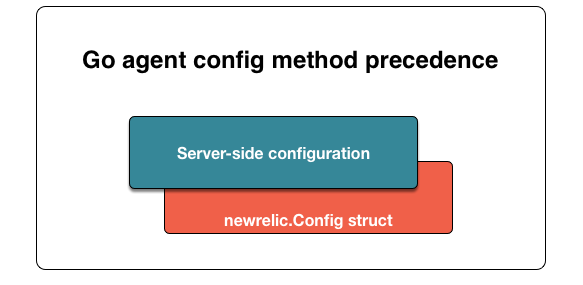
Newrelic Configuration settings precedence DOT NET Agent
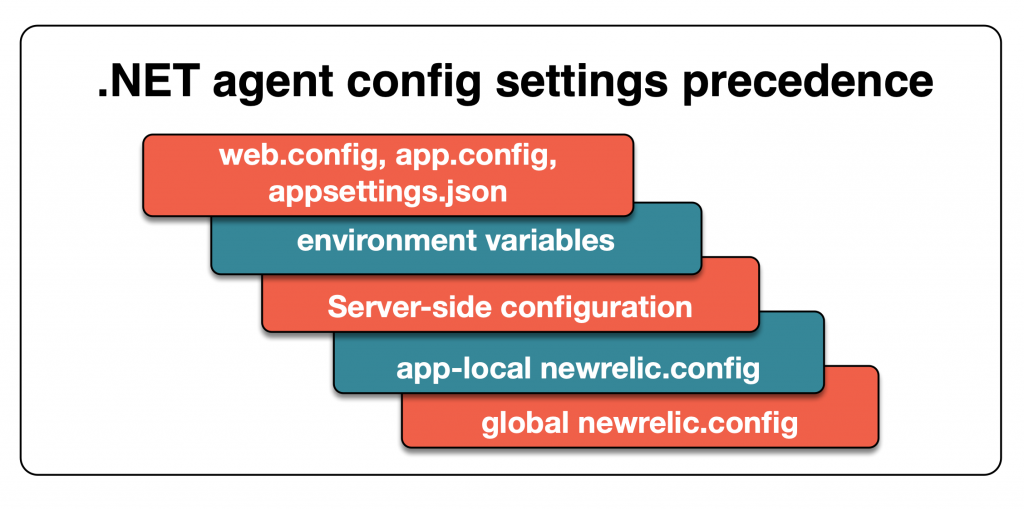
Newrelic Configuration settings precedence Node.js agent
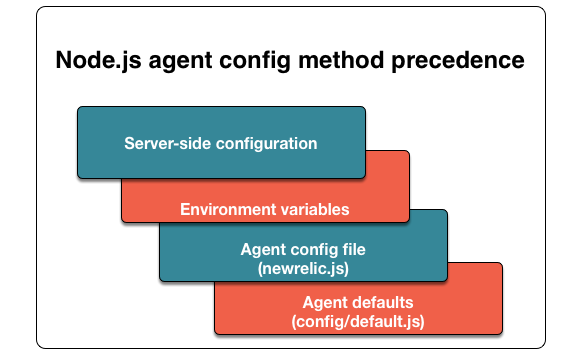
Newrelic Configuration settings precedence PHP agent
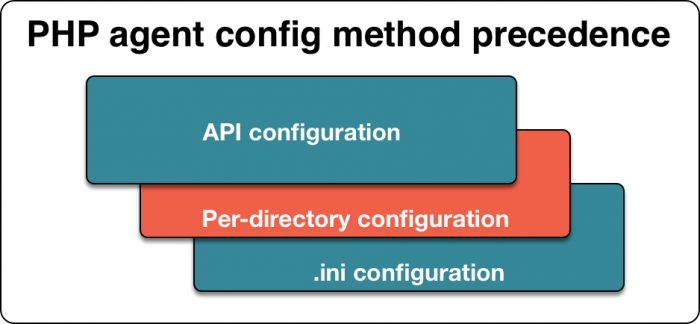
Newrelic Configuration settings precedence Python agent
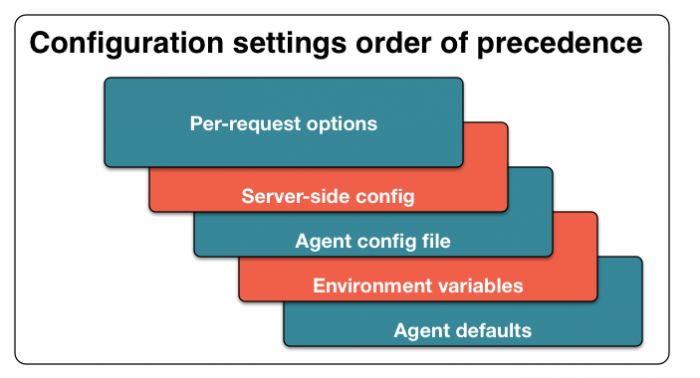
Newrelic Configuration settings precedence Ruby agent
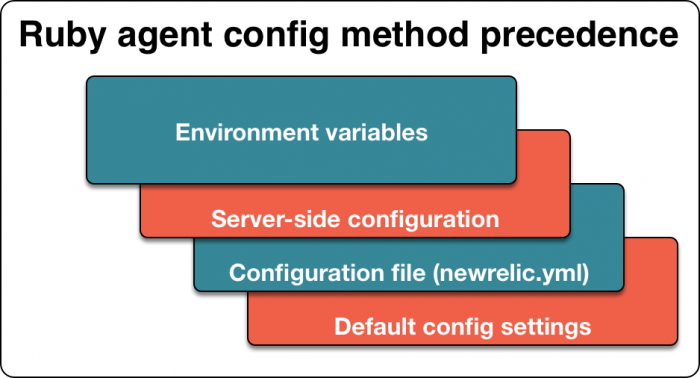
Reference
I’m a DevOps/SRE/DevSecOps/Cloud Expert passionate about sharing knowledge and experiences. I am working at Cotocus. I blog tech insights at DevOps School, travel stories at Holiday Landmark, stock market tips at Stocks Mantra, health and fitness guidance at My Medic Plus, product reviews at I reviewed , and SEO strategies at Wizbrand.
Do you want to learn Quantum Computing?
Please find my social handles as below;
Rajesh Kumar Personal Website
Rajesh Kumar at YOUTUBE
Rajesh Kumar at INSTAGRAM
Rajesh Kumar at X
Rajesh Kumar at FACEBOOK
Rajesh Kumar at LINKEDIN
Rajesh Kumar at PINTEREST
Rajesh Kumar at QUORA
Rajesh Kumar at WIZBRAND

